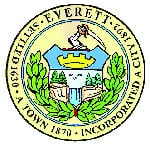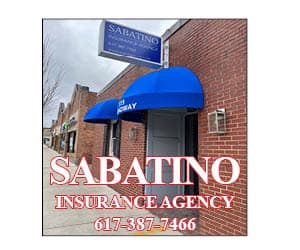By Neil Zolot
The Everett Planning Board approved a new Housing Production Plan (HPP) with a recommendation for adoption by the City Council at their meeting on Monday, August 4. “It has merit and should be passed,” member Leo Pizzano said.
Planning Board Chairman Fred Cafasso said adoption of the HPP is a “reasonable start” in creating affordable housing.
Everett Director of Planning & Community Development Matt Lattanzi called the HPP “a useful tool to identify opportunities for development.”
The HPP was prepared by Metropolitan Area Planning Council (MAPC) consultants Gloria Huangpu and Casey Williams. It’s blunt in its assessment that Everett needs more housing, particularly affordable housing and housing suitable for families, and that the supply of affordable housing doesn’t meet the needs of the city, leading to people leaving because they can’t afford housing.
The median household income in Everett is $79,660, only about 60% of the Area Median Income (AMI) of $148,900, although the AMI is a regional calculation that includes similar communities like Malden and Medford, but also wealthier communities like Newton, North Reading and Winchester. Affordable housing is considered 80% of the AMI, while 60% of it is deeply affordable, but the inclusion of the affluent communities in the AMI doesn’t reflect earnings in Everett. With “affordable” rents based on incomes higher than those in the city, in some cases much higher, the definition of affordable units based on the AMI is above the means of many Everett residents.
Among those who can afford to live in Everett, over half of all households are “housing-cost burdened,” meaning more than half of the income is spent on rent or mortgage payments.
Most of the growth in housing is at market rates, well beyond the means of many residents. “Homeownership can provide stability, but is out of reach for many Everett households,” the HPP reads.
Development Constraints cited in the HPP include the lack of open land, the lack of City of Everett owned land to sell and that open land, particularly along the Mystic River or once used for industrial purposes, is vulnerable to flooding or requires expensive environmental remediation or cleanup, which drives market rates and affordable rents up. “Somebody’s got to pay for that,” Pizzano said of remediation. “You’re not going to get a developer to spend an astronomical sum for remediation without affecting rent.”
Many other communities have open land in parks, unused school grounds or abandoned churches that requires minimal remediation. Lattanzi called that buildable or shovel ready land as opposed to “opportunity land,” which requires remediation.
Goals listed in the HPP include creating deeply affordable rents, inclusionary zoning, which mandates affordable housing, and lobbying state and federal authorities for subsidies and tax breaks for developers to create affordable housing.
There is inclusionary zoning for affordable housing, but it varies depending on where a development is. It’s lowest in the former industrial areas, where expensive environmental remediation is required.
The end goal is to have 10% of the housing stock affordable to meet the requirement of Massachusetts General Laws Chapter 40B, so-called anti-snob zoning, which allows developers to bypass many zoning requirements to incentivize 25% of a development being affordable. In exchange for affordable housing, a 40B development is able to sidestep zoning ordinances and municipal requirements but puts pressure on developers to build high-density projects for economic viability. The incentive for communities is that the state will count all the units in a development as affordable whether they are affordable or not to reach the 10% level, called “safe harbor,” but it was not lost on Pizzano that that still produces a low number of affordable units.
Everett is at about the 7% level and needs 978 units to reach 10% calculated by current numbers. If the housing stock expands, however, that gap will grow.
Technically, the City is in compliance with 40B based on it meeting the 1.5% of land threshold for open land deed-restricted for affordable housing. The current level in Everett is 2%, but Lattanzi said that number will go up as “open land” that is unbuildable like parks are reclassified.
The meeting was the first for new Planning Board member Stephanie McColaugh. “I’m eager to get involved so Everett reaches its full potential and figured my background in consulting would be an asset,” she said, a reference to her job as an environmental consultant at Gutteridge, Haskins and Davey, an international consulting firm based in Australia. McColaugh is also a member of Cleanup Everett. At various public forums and meetings, she has spoken about street trash in the form of small liquor bottles known as nips and in favor of the proposed soccer stadium on the Mystic River.





